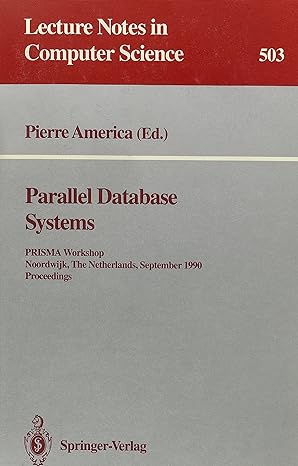Question
1. In the following sequence, each number (except the first two) is the sum of the previous two number: 0, 1, 1, 2, 3, 5,
1.
In the following sequence, each number (except the first two) is the sum of the previous two number: 0, 1, 1, 2, 3, 5, 8, 13, .... This sequence is known as the Fibonacci sequence.
Given the positive integers m and n (with m < n) create a list consisting of the portion of the Fibonacci sequence greater than or equal to m and less than or equal to n. For example, if m is 3 and n is 6, then the list would be [3, 5] and if m is 2 and n is 20, then the list would be [2, 3, 5, 8, 13].
Associate the list with the variable fib.
2. Given a variable t that is associated with a tuple whose elements are numbers, write some statements that use a while loop to count the number of times the first element of the tuple appears in the rest of the tuple, and associate that number with the variable repeats. Thus if the tuple contains (1,6,5,7,1,3,4,1), then repeats would be assigned the value 2 because after the first "1" there are two more "1"s.
Use Python for submission to Codelab
Step by Step Solution
There are 3 Steps involved in it
Step: 1

Get Instant Access to Expert-Tailored Solutions
See step-by-step solutions with expert insights and AI powered tools for academic success
Step: 2

Step: 3

Ace Your Homework with AI
Get the answers you need in no time with our AI-driven, step-by-step assistance
Get Started


